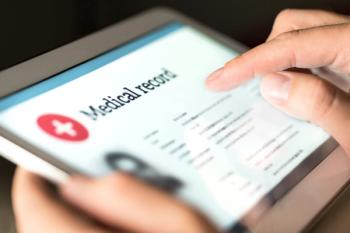
Getting Started With Medication Management Services
Part 1 of this 3-part series examines how to strategically integrate this alternative revenue source into the pharmacy.
Not many aspiring professionals go to pharmacy school to learn to count by fives. Yet counting pills and other prescription-related tasks continue to dominate the daily routine for too many pharmacists. Regardless of the setting, pharmacists focused on filling prescriptions seldom have time or other resources to care for patients beyond the immediate encounter
Medication management services (MMS) help define an area of professional clinical services distinct from dispensing medication products. Importantly, MMS activities and outcomes can be quantified, measured, and tracked for reimbursement purposes. Providing MMS and tracking results to demonstrate improved outcomes are a professionally sustainable business model moving into the future.
“Medication management services [means] being proactive, getting ahead of interactions and other drug issues we find with patients, keeping track of their health so we know if something changes that might mean a change in their meds,” said Karami Reed, PharmD, a clinical associate at Shaver Pharmacy and Compounding Center in Pocatello, Idaho. Reed is translating a recent community pharmacy fellowship from the National Community Pharmacists Association (NCPA) Innovation Center and the Community Pharmacy Enhanced Services Network (CPESN) into practice.
“We are developing new payers. We’re talking with the cardiology center at a local hospital about managing patients with heart failure. The cardiologists all want us on board. It’s just a matter of convincing administrators,” Reed said. “When you think about people visiting their pharmacy 3 times a month versus seeing a physician once a year, MMS makes total sense in terms of improving outcomes.”
Use an Appointment-Based Model
The key to successful MMS is getting paid for it. That means getting off the Rx treadmill that has pharmacists filling prescriptions as one-time events when patients walk in the door.
“We are not keeping the doors open and lights on very successfully by just filling prescriptions,” said Cheri Schmit, PharmD, director of clinical pharmacy for GRX Holdings LLC, which operates 22 community pharmacies in central Iowa. “Finding an alternative revenue source is vital to staying in business.”
According to Flip the Pharmacy, a transformation organization founded by the Community Pharmacy Foundation, patients with 2 or more chronic conditions account for 70% of the national health care bill and 83% of pharmacy fills.1 Transforming pharmacy workflow and business models to reflect the realities of health care needs is good for patients, good for payers, and good for the sustainability of pharmacy.
The first step in flipping the pharmacy workflow is scheduling patients rather than waiting for them to appear. Medication synchronization can convert patients with chronic conditions to scheduled visits and scheduled refills.
Carlie Traylor, PharmD, associate director of strategic initiatives and student affairs for the NCPA, refers to scheduled appointments as proactive workflow.
Before joining NCPA, Traylor was clinical director for Chancy Drugs, a 6-store independent pharmacy in South Georgia. She used MedSync to create a predictable workflow that lets pharmacists focus on immunizations, adherence, patient education, and other nondispensing services.
“When you get about 40% of your volume being dispensed in a proactive workflow, it’s like flipping a light switch,” Traylor said. “That’s when you suddenly see you have the time and the resources to start bringing enhanced clinical services on line.”
MedSync also improves adherence and boosts refill numbers, said Cody Clifton, PharmD, director of clinical services at Duvall Family Drugs in Duvall, Washington. And just as technicians handle most of the dispensing workload, techs handle routine MedSync calls. Duvall, like many independents, uses live MedSync calls, not robocalls.
“Having your MedSync program down pat, maximizing it and continually enrolling patients, gives you the time and the cash flow to implement additional services and line up payers,” Clifton said.
MTM as a Springboard
Maximizing Part D Medication Therapy Management (MTM) is another opportunity to shift the business model.
“CMS [Centers for Medicare & Medicaid Services] has a standardized format for comprehensive medication reviews and targeted medication reviews under MTM,” said Jessica Frank, PharmD, vice president for payer solutions at OutcomesMTM, a Cardinal Health company that designs and administers Part D–compliant MTM programs. “But the conversation can— and should—be tailored to the patient. There are payable intervention opportunities for Medicaid and commercial payers as well as interventions for Medicare members outside the mandated Part D MTM program.”
Think flu shots and pneumococcal vaccinations, both reimbursable, said Jordan Ballou, PharmD, clinical assistant professor of pharmacy practice at the University of Mississippi School of Pharmacy
COVID-19 vaccination is another reimbursable opportunity. Although most Medicare recipients have already received at least 1 dose of a COVID-19 vaccine, they will need the second dose if indicated. Those same patients may have younger family members, relatives, friends, and acquaintances who are eligible but not yet fully vaccinated.
“Part D MTM is a springboard to other services,” Ballou said. “It’s not just vaccines. We’re an accredited provider of DSME [diabetes self-management education]. I can remind patients that we offer diabetes education through Medicare. Yes, MTM is limited, but it’s an opportunity to learn what other services that particular patient might find useful. MedSync and using MTM as a bridge to non-Medicare services are ways to transform your business plan.”
Creating a Sustainable Business Model
Pharmacy has been talking about transforming itself for decades.
“Bill Apple made the case for separating product from service reimbursement when he was CEO at the American Pharmacists Association [APhA] in the 1970s,” said Lucinda Maine, PhD, RPh, executive vice president and CEO of the American Association of Colleges of Pharmacy (AACP).
Colleges of pharmacy have been pushing to separate pharmacy services and products for almost as long. The Accreditation Council for Pharmacy Education cited the growing role of clinical services when it replaced the bachelor of science with the doctor of pharmacy as the sole professional practice degree in 1997.
Just like there is no one-size-fits-all medication regimen, there is no 1 business model that fits all pharmacies. AACP and CPESN created the Academia-CPESN Transformation (ACT) Pharmacy Collaborative to develop and publicize a variety of business models. The collaborative has collected more than 120 different practice models. Several are included in an inaugural ACT Patient Casebook.
Independent pharmacies have long focused on clinical services to differentiate themselves. What goes into the service mix depends on what payers and patients need. Successful MMS is about solving problems for both.
“COVID-19 has provided a lot of opportunities to boost clinical services like telehealth and consultations when physician offices were closed,” noted Anne Burns, BSPharm, RPh, APhA vice president of professional affairs. “The way pharmacies jumped into [COVID-19] testing and immunizations has opened a lot of eyes to the kinds of services we can provide that have a real impact on people’s lives and health.”
Paid Beats Free
It all comes back to getting paid.
“We’ve always given our services away,” said Becky Snead, RPh, executive vice president and CEO, National Alliance of State Pharmacy Associations. “Free is a hard thing to transition away from, whether you are a pharmacist or a payer.”
Payers won’t cover MMS until they see it in action, and pharmacists can’t provide MMS until they get reimbursed for it, noted Clifton, who is also CPESN’s director of practice transformation and clinical programs.
“You don’t offer a payer, maybe a self-insured business, a hospital, a medical practice, [or] a health insurer your whole library of services,” Clifton explained. “You offer the services that are tailored to their individual pain points. Payers don’t care that you are a highly skilled pharmacist. They care that you can solve their specific problems. Easing payers’ pain points is the sustainable business model. And it’s starting to happen.
Next month, part 2 of this series will dive deeper into reimbursement for MMS.
Reference
- Change packages: why FtP? Flip the Pharmacy. Updated 2021. Accessed April 30, 2021.
https://www.flipthepharmacy.com/why-ftp
Newsletter
Pharmacy practice is always changing. Stay ahead of the curve with the Drug Topics newsletter and get the latest drug information, industry trends, and patient care tips.

















































































































